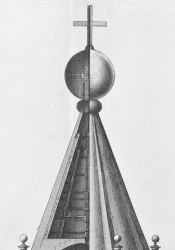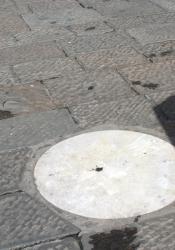Florence, Italy
Florence, Italy was the location of Andrea del Verrocchio's workshop until the later years of his life when he moved to Venice. This is where he and a young Leonardo da Vinci worked on creating the palla and cross that topped the lantern on the Florence Duomo. That project in particular lasted from 1468 to 1471, and 1472 is suspected to be the time that da Vinci's apprenticeship with Verrocchio ended and he began to take on projects of his own. During this time, it seems he still stayed with Verrocchio as a collaborator until 1476, while simultaneously starting his professional painting career. From Verrocchio, da Vinci learned about design, drawing and relief, which he carried over into his artwork.
Works Cited:
Bambach, Carmen. Leonardo Da Vinci Master Draftsman: Catalogue to an Exhibition at The Metropolitan Museum of Art, New York 2003. Yale University Press, 2003.
Parent Map
Coordinates
Longitude: 11.255813600000


